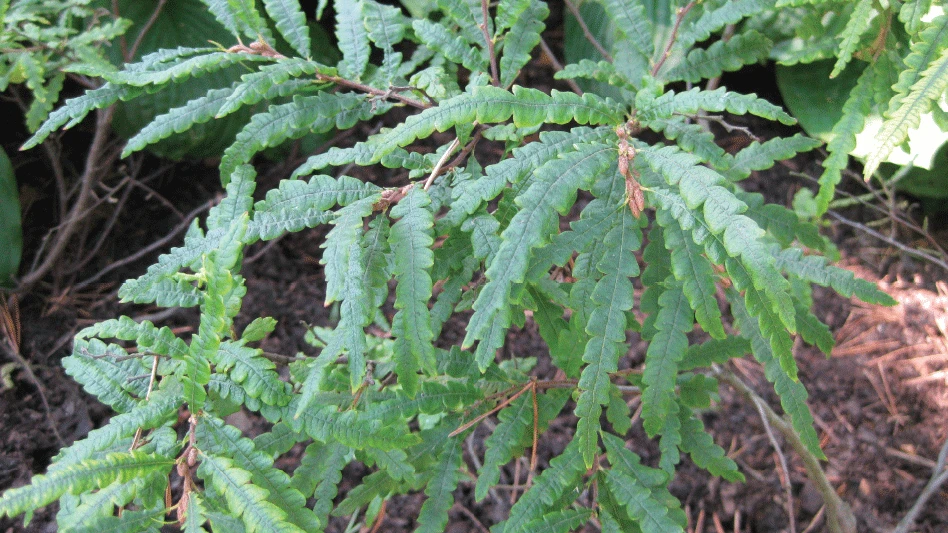 When excess nutrients leach from nursery and greenhouse fertilizers into the environment, the results can be costly on many levels. Aside from negative environmental impact, bad publicity (and even legal liability for your growing operation), excess leaching can lead to inconsistent crop quality and reduced profitability. When excess nutrients leach from nursery and greenhouse fertilizers into the environment, the results can be costly on many levels. Aside from negative environmental impact, bad publicity (and even legal liability for your growing operation), excess leaching can lead to inconsistent crop quality and reduced profitability.When essential elements intended to feed crops miss their intended targets, fertilizer budgets suffer and large quantities of nutrients may needlessly enter the soil and nearby water supplies. Government agencies are increasingly monitoring groundwater contamination, and many states are regulating nutritional programs as a result. Fertilizer manufacturers are also taking steps to better educate their grower customers. According to Chris Buchheit, manager of ornamental horticulture nutrition products for Everris, his company developed its own sustainability concept called e3—a balance of economy, efficiency and ecology—for just this purpose. “We understand the environmental and financial pressures our grower customers are facing,” Buchheit said. “The goal of our e3 concept is to help growers understand how they can mesh sustainable production processes with financial success. Using fertilizers efficiently by minimizing nutrient leaching is an integral part of this concept.” Growers who are not currently trying to manage excess nutrient leaching should take the time to investigate this issue and implement better nutrient management practices where possible, Buchheit said. “Efficient and profitable growers should strive to deliver nutrient programs that maximize efficiency of nutrient uptake by matching plant needs,” Buchheit said. “These programs should also focus on reducing waste and maximizing financial return.” Growers can capitalize on the returns on their investments in fertilizer and become better environmental stewards by selecting the most appropriate products and using them responsibly. Here are six practical steps to prevent nutrient leaching. 1. Product selection Proper fertilizer selection is critical to success. Adding unnecessary nutrients will not grow a better crop, but it will increase both production costs and the likelihood that nutrients will leach. Select products from a position of strength:
Controlled release fertilizers (CRF) are coated and can dramatically reduce nutrient leaching. Recent nursery research in Oregon with Osmocote fertilizers indicated that N-P-K levels in run-off from container drainage holes is reduced to almost nothing a few weeks after application. CRFs are much more efficient as they feed plants with constant low concentrations of nutrients. This means that they are generally applied at much lower doses per container than WSF over the whole growing season. Even after a heavy rain event leaches the root zone, CRFs quickly recharge the growing media with nutrients to avoid a “feast or famine” situation. If coated fertilizer nutrient release patterns are matched more closely to crop growth, fertilizer utilization is more efficient and less wasteful. 2. Rate selection Product bag-label rates are generic. There is no universal standard for “medium” or “high” rates. Bag labels may guide you to a starting point, but there is always room to customize rates for your cropping systems. Using lower concentrations of WSFs may be possible. Certainly the average WSF concentration used by growers has fallen the past 10 years from historical levels. Consult with representatives from fertilizer companies and plant suppliers to see if you may be adding more fertilizer than your crops actually need. Higher than optimal rates are expensive, wasteful and may stress plants. Lower than optimal rates will reduce crop quality and extend the length of time a plant must spend at the nursery. Growers should pick the rate best suited for their conditions. As many cultural and environmental factors will impact the efficacy of a fertilizer application, conduct trials on-site to optimize fertilizer rates. Growers may be able to cut CRF rates by a few pounds per cubic yard and still achieve their production goals. Optimizing rates through trials will result in lower costs and less nutrient leaching. 3. Application method The way a fertilizer is applied directly impacts how efficiently it will perform. Fertilizer that doesn’t make it to the root zone is likely to end up in the environment. Overhead applications of WSF through sprinklers can be highly inefficient. Depending on plant spacing, more than 75 percent of droplets may not even hit a plant. These droplets fall to the ground and are likely to become washed away as run-off. Even hand watering can be wasteful. A recent study in Ohio indicated that more than 60 percent of the WSF solution can be lost as the wand is moved from pot to pot. Systems that direct nutrient solutions right to the root zone such as drip systems can certainly reduce the total volume of nutrient solution applied (and the volume wasted through run-off). CRF application methods can impact nutrient leaching. Even though CRF is coated, nutrients can be wasted if granules don’t land in the pot where they belong. Commonly, CRF is incorporated in the soil for first-year plants. This practice is both labor and nutrient efficient. Methods such as dibbling or subdressing (burying pockets of fertilizer in the root zone) can also be efficient. Anything that can potentially abrade CRF coating, such as screw gears, excess time in a pot-filling machine or rough handling when pad-mixing with a front end loader, can contribute to nutrient run-off. Second-year plants are often top-dressed. Broadcast applications, even with pot-to-pot spacing, can be wasteful. Even spooning fertilizer by hand onto the soil surface can lead to unintentionally spilling fertilizer onto the ground. Here, nutrients can infiltrate the groundwater—especially true of top-heavy plants in windy fields. 4. Timing Timing fertilizer applications as closely as possible to active crop growing periods makes it more likely to be absorbed by the crop. Sometimes there is a delay between fertilizer application and active crop growth for logistical reasons. Winter potting. Nurseries often have staff available in winter or early spring to apply fertilizer when crops are still dormant. As unheated over-wintering houses warm due to winter sunshine, CRF in containers can begin to release at a time when crops do not need nutrients. In this case, soil EC (electrical conductivity) levels can build up to unacceptable limits and the wasted nutrients will be lost when containers are leached. Soil pile. Many growers choose to have a potting soil manufacturer incorporate CRF into their mix. While convenient, the CRF release “clock” begins ticking right after it’s mixed with the soil. As bulk piles are transported and moved, they can easily begin to heat up, further accelerating the nutrient release process. It is important to use up media that contains CRF as soon as possible. Soil that has sat around for a while can be leached before using to remove the potential high EC (and nutrient content); however, these nutrients will be discharged into the runoff. 5. Irrigation Nutrients in the root zone from both WSF and CRF move with water. Excess water will move nutrients out of the pot and into the environment. Again, exercise care to avoid excess irrigation volumes. Cycle times that water crops to container capacity without significant drainage will be most efficient. Collection jars for drip emitters or rain gauges can monitor this. Some growers employing WSF will customarily clear water leach on the weekends. This is a wasteful practice as it washes useful nutrients out of the pot. Maintain root zone EC levels at acceptable levels. If EC levels are rising, cut back on the applied concentration. If you are a wet grower, moving toward dry growing can help save water and nutrients. By reducing the leaching fraction (how much of the applied solution is leached from drainage holes), one can lower the total amount of fertilizer applied to a crop and conserve nutrient waste. 6. Systems Special systems can be employed to better conserve nutrients. If it is not always possible to apply nutrients efficiently, contained systems such as flood floors or water/nutrient capture-and-recycle layouts can protect the environment and save money. Growing media selection will impact utilization of WSF applications. Soilless media made with a high percentage of bark doesn’t really hold nutrients very well. Open, well-drained mixes made from bark and sand are more easily leached. By adopting a tighter medium with greater water-holding capacity (peat, rice hulls, coir, vermiculite), growers can conserve both irrigation and nutrients. Injectors often receive too little attention. Fertigation systems responsible for metering out WSF need to be calibrated and maintained frequently to ensure they are delivering the desired nutrient output. A simple test of soluble salts (EC) coming out the end of the hose can be used as an on-site quality assurance check by the grower. By understanding growing systems and fertilizers—what and how much to purchase, as well as when and how to apply it—growers can maximize the efficiency of their crop fertility programs. Scrutiny of these production inputs and systems not only makes business sense, but can make nursery and greenhouse growers become even stronger and more responsible environmental stewards. “Sustainable practices, like those that minimize nutrient leaching, help growers be both environmentally and financially responsible,” Buchheit said. “While sustainability does involve leaving a smaller environmental footprint, it’s also about using the most effective products in the most efficient manner possible for greater profitability. Growers who practice that concept are the ones who will come out on top.” Fred Hulme is technical services manager for Everris. |

Explore the June 2011 Issue
Check out more from this issue and find your next story to read.
Latest from Nursery Management
- Dümmen Orange North America celebrating 25th anniversary in 2025
- Illinois Landscape Contractors Association changes name to Landscape Illinois
- 2025 Proven Winners Horticulture Scholarship applications now open
- ICL’s Gemini Granular herbicide now registered for use in California
- Eurazeo Planetary Boundaries Fund acquires Bioline AgroSciences
- The Leading Women of Horticulture
- Leading Women of Horticulture: Dana Massey, Plantworks Nursery
- Spring Survival Guide





